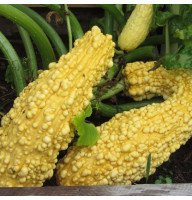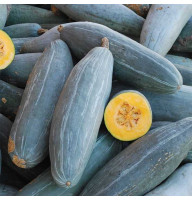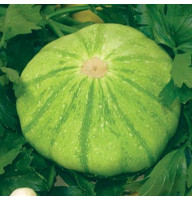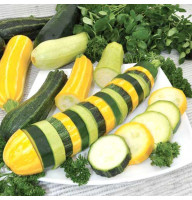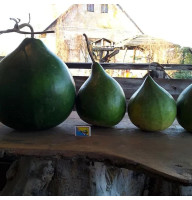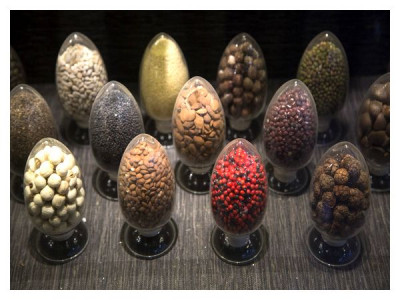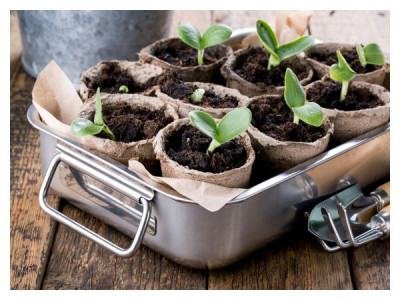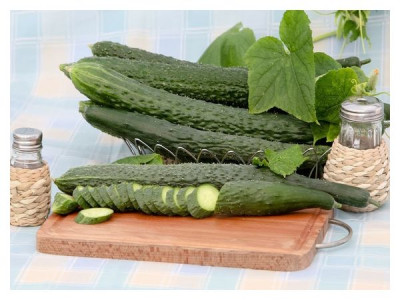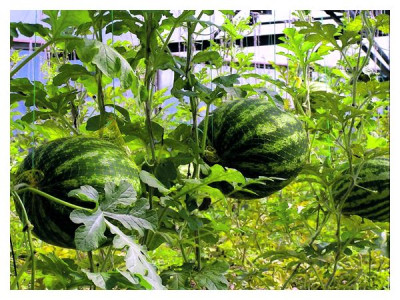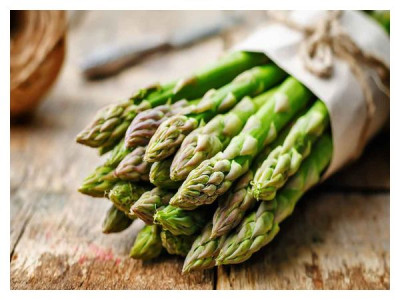If almost every summer resident knows almost everything about “ordinary” zucchini and pumpkins, and you can find such vegetables literally in every garden plot, then strange twisted fruits cause surprise or regret for many in the first place - they say, this year’s harvest probably won’t good luck, sick!

Meanwhile, these fruits are quite normal and healthy, they simply belong to another variety of plants of the Cucurbita family.
Such round pumpkins with a long curved "neck" are characteristic of one of the forms of the common pumpkin (hard bark, Cucurbita pepo). Such fruits, however varied their shape, color and size, are always broader at the flower end and much narrower at the pedicel. How this vegetable is just not called by the people - and pumpkin-wryneck, and crooked zucchini, and kruknek (from the English crooked neck - "crooked neck"), and squash squash (this is just the name of one of the varieties) ...
If you still don’t know, zucchini, zucchini, and patisson are exactly the same forms of an ordinary pumpkin, and not at all separate types of cultivated plants.
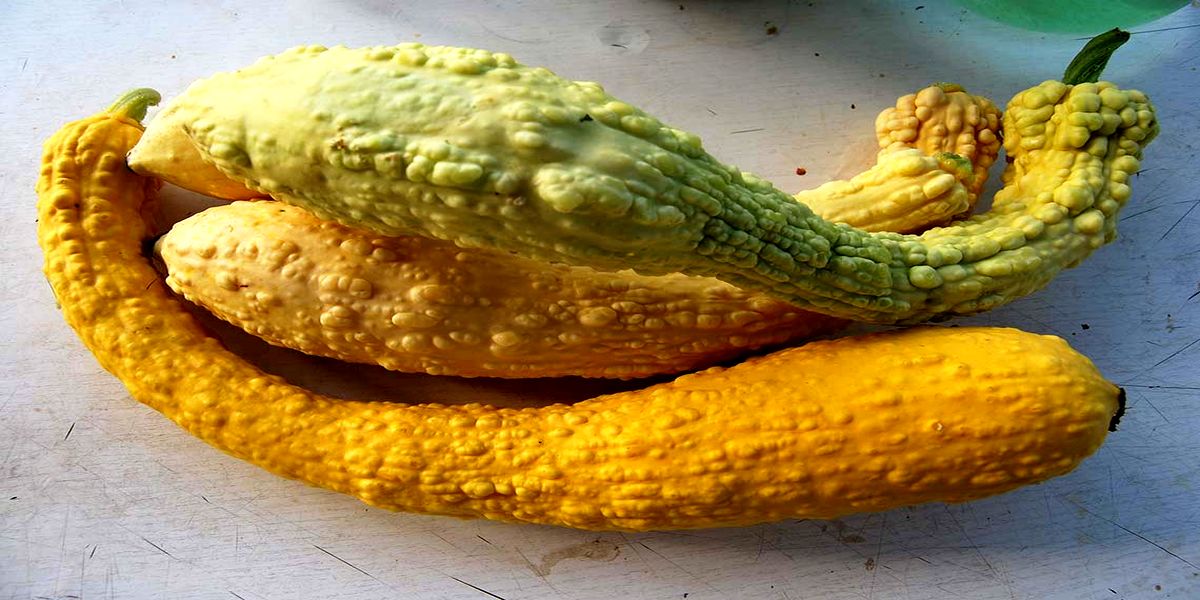
What kind of plant is this and how to grow it in the country?
Crooknek is an annual herbaceous culture that forms a sprawling bush up to 1 m high with a powerful strongly branching root, densely pubescent stems, five-lobed green leaves of medium size and large yellow single flowers (male and female). Its fruits, like zucchini, belong to the "summer pumpkins" - they are eaten young and juicy, without waiting for the fruit to fully ripen and the seeds to ripen. Pumpkin seeds are very similar to squash seeds, only smaller.
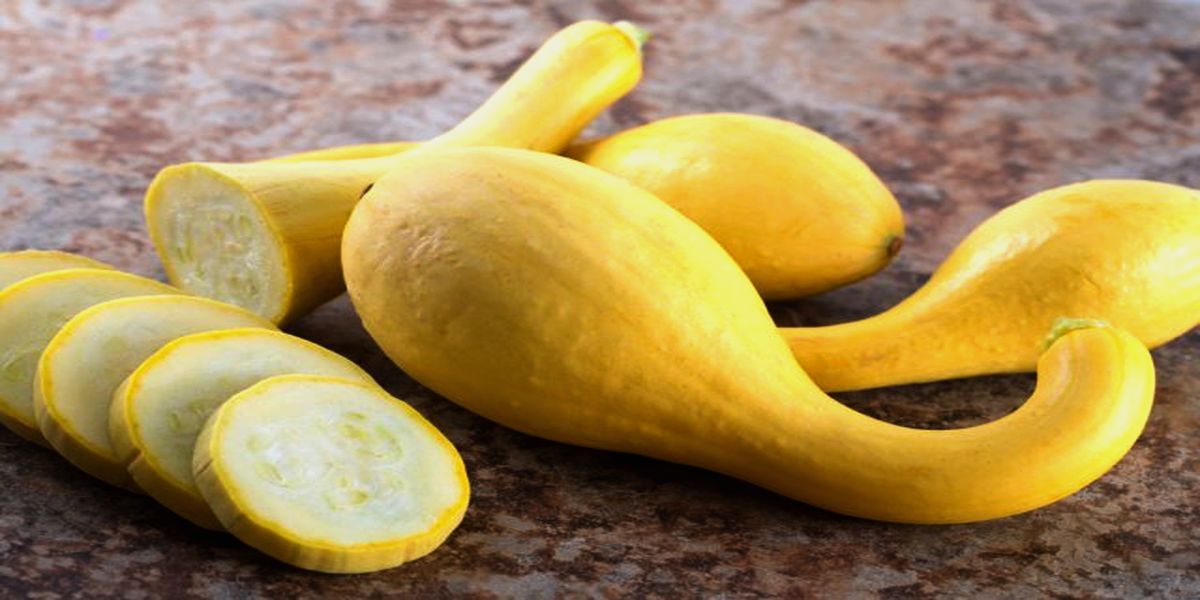
Most often there is a yellow variety of kruknek - its young edible fruits are smooth and bright yellow, and ripe ones (already rather decorative, rough inside and out, with a worse taste) become rough and covered with "warts". There are also forms and varieties of kruknek with fruits that are colored differently - white, orange, green, as well as striped and spotted.
No matter how crookneck looks, its fruits are tasty and healthy, with tender and low-fiber juicy flesh of white, cream or pinkish color. They contain a lot of carotene and ascorbic acid, useful trace elements - kruknek is suitable for dietary nutrition, is easily absorbed by the body, and many sources even claim its medicinal properties.
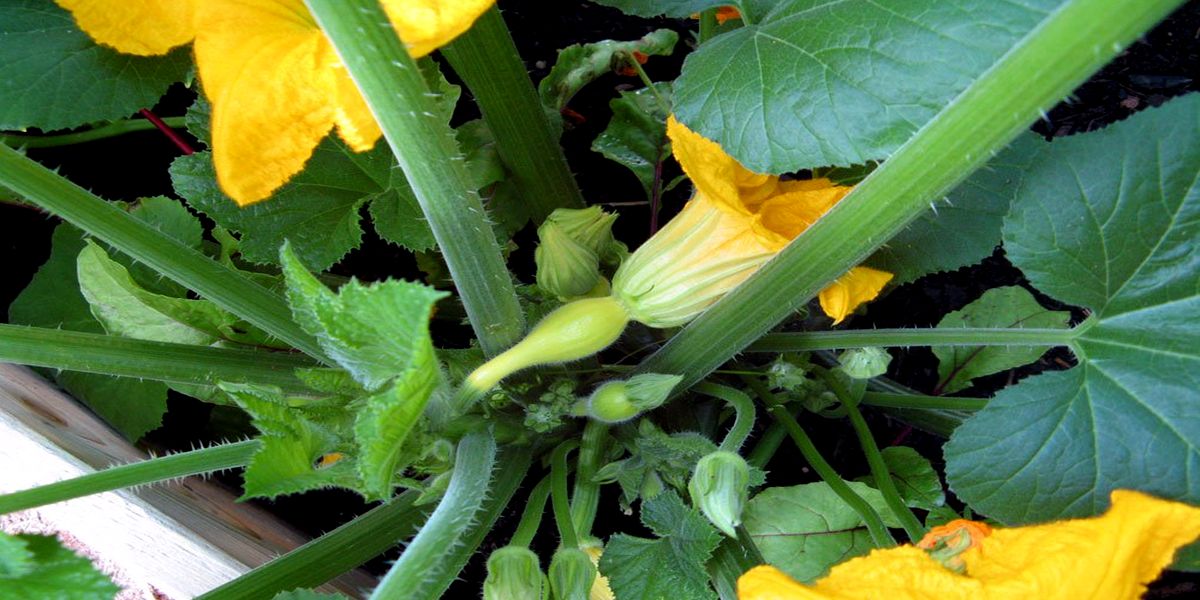
Growing crookneck
To begin with, you must choose the variety of kruneck that you will grow - they differ not only in size, color, shape and keeping quality of the fruit, but also in the early maturity and size of the bush.
We grow crookneck through seedlings - a heat-loving plant native to Central America does not tolerate frost at all, especially at a young age.
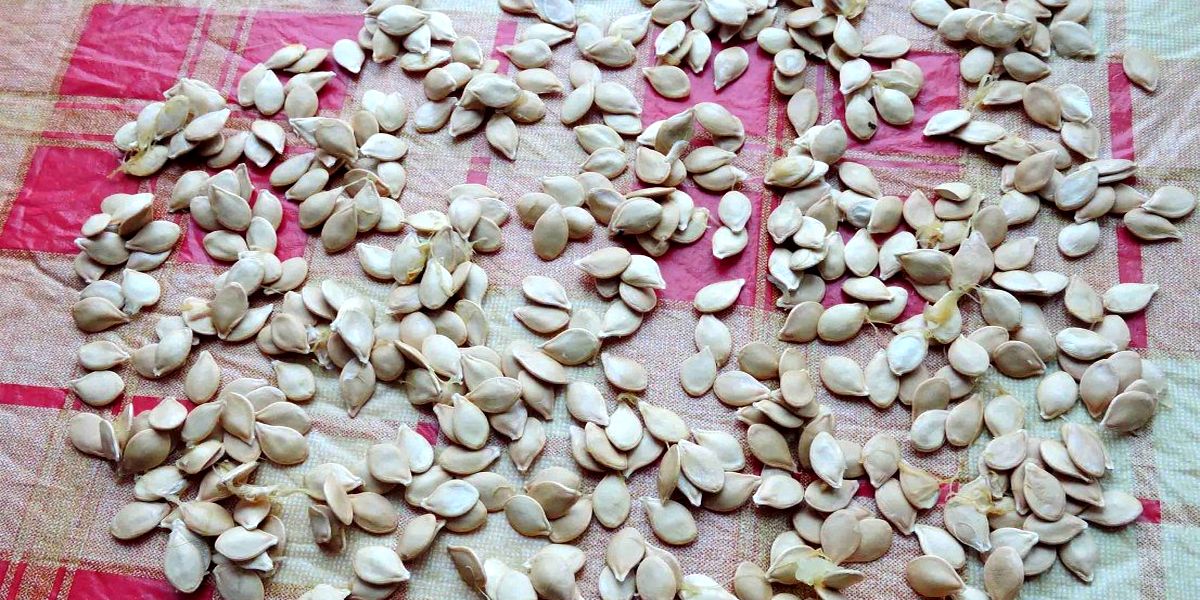
Seeds for seedlings are sown at the end of April in cups with sterilized universal fertile soil for seedlings. Sow to a depth of about 4 cm, for the first time cover with a film. The optimum temperature for seed germination of kruknek is 25-27°C, seedlings appear in 4-8 days.
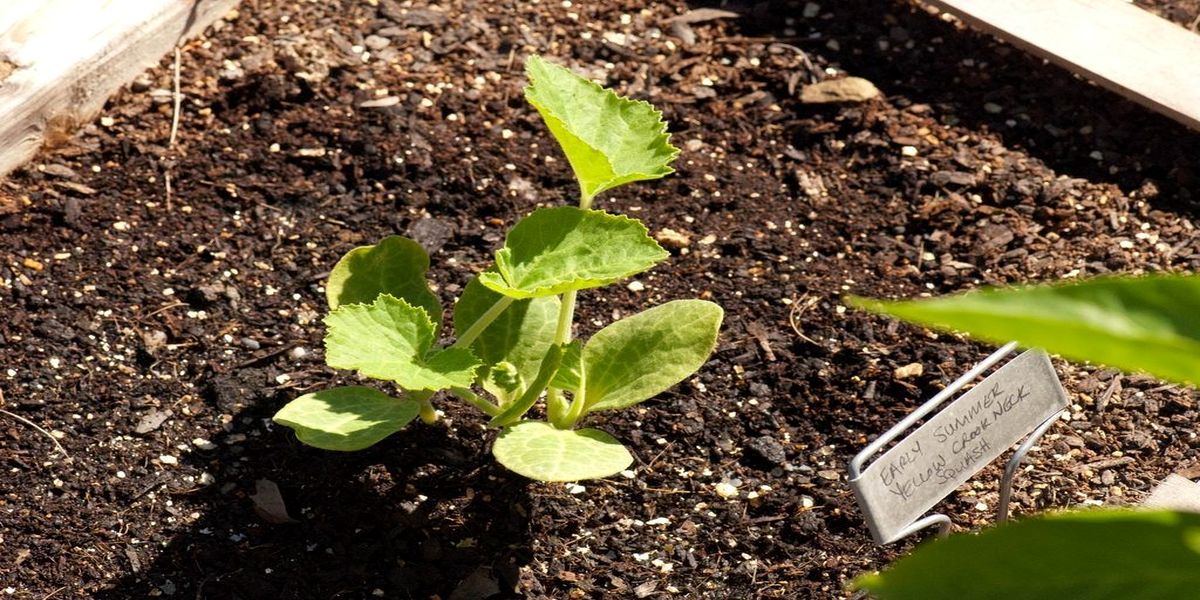
Seedlings with 2-3 true leaves are planted in open ground in early June, when the threat of frost has absolutely passed, leaving a distance of at least 60-70 cm between plants (about one plant per 1 sq.m). In the early days at night, you can cover the established seedlings with spunbond.
For culture, the warmest and well-lit place is chosen on a site with light fertile permeable soil and without cold drafts. Predecessors can be any plants, except for representatives of pumpkin. Planting pits or a garden bed are filled with organic matter (compost or humus) from the fall, but immediately before planting, you can apply a complete mineral complex fertilizer according to the instructions and a handful of ash for each bush.
Crookneck is easily pollinated with related pumpkin crops - therefore, if you want to get "clean" vegetables (and even more so if you want to collect seeds from them for further cultivation), plant it at a distance from zucchini, pumpkins, zucchini, squash.

What is the further care of the crookneck? Although this plant is drought-resistant, it responds very well to regular abundant watering with soil loosening (water should not fall on flowers and ovaries!). Just do not use cold water from a water supply or a well for this, we have already written how sensitive the culture is to cold. It is better to first let the water stand for a while and warm up under the sun. To better retain moisture in the beds, they can be mulched.
The optimum temperature for the growth and development of crookneck in the garden is about 25 ° C. If cool rainy weather persists for several days (or, on the contrary, extreme heat and scorching sun), then the plant may refuse to form ovaries. The best way out in this case is to try to soften the harsh conditions. For example, shade the bushes at noon and spray them, or build a greenhouse protection from rain and cold.
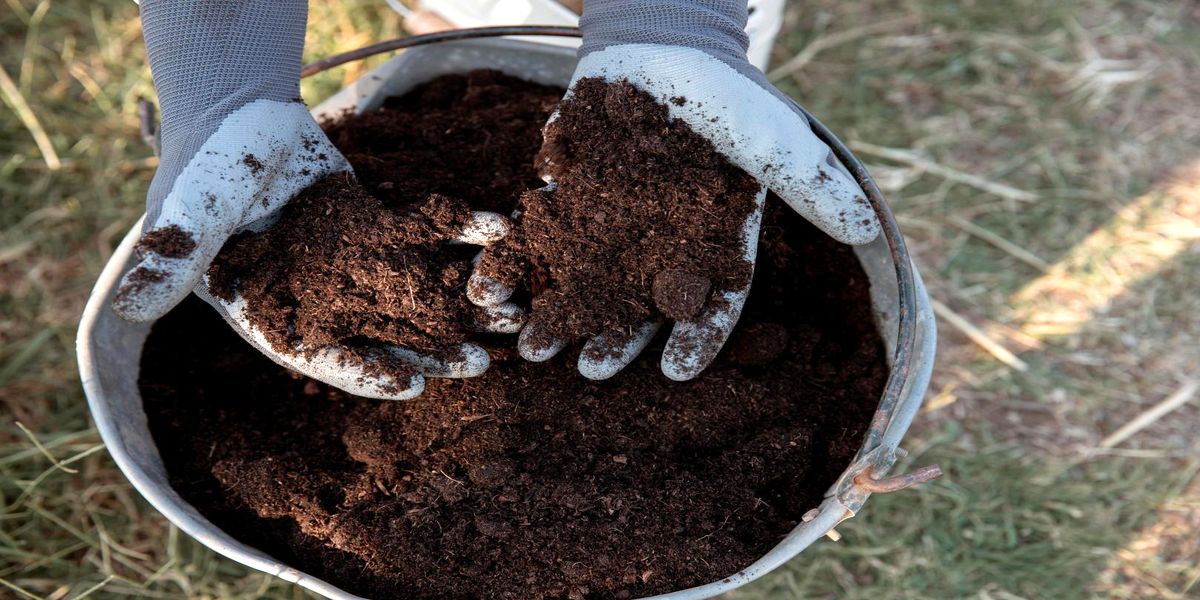
To form a rich harvest (and in the case of good care, kruknek bears fruit very abundantly), every 10 days, fertilize under the root with a solution of any complex mineral fertilizer for vegetables. Also, as a food, you can use a solution of mullein (dilute with water 1:10) - make it regularly with an interval of the same 10 days. Feeding during flowering and fruiting is especially important.
Since this plant is pollinated by insects, try to attract them to your site, for example, by planting marigolds or other companion flowers in the aisles, or occasionally spraying plantings with a sugar solution (100 g per 1 liter of water).
Sometimes (usually during temperature stress) plants begin to form an abundance of male flowers to the detriment of female ones. In this case, try to pinch the main shoot, remove the apical buds - the flowers on the side shoots that have begun to actively form will be predominantly female.
As for diseases and pests, the main scourge for crookneck, like for many cucurbits, is downy mildew (downy mildew). To avoid infection of plants with fungal infections, observe crop rotation, try to avoid thickening of plantings (especially at high humidity) and do not use cold water for irrigation, otherwise you will have to use fungicides.
Of the pests, aphids can most often “attack” a crop, which, in the event of a massive infection, can literally deplete plants. To avoid insect invasion, observe crop rotation and agricultural practices, and use insecticides in a timely manner for preventive spraying of plants.
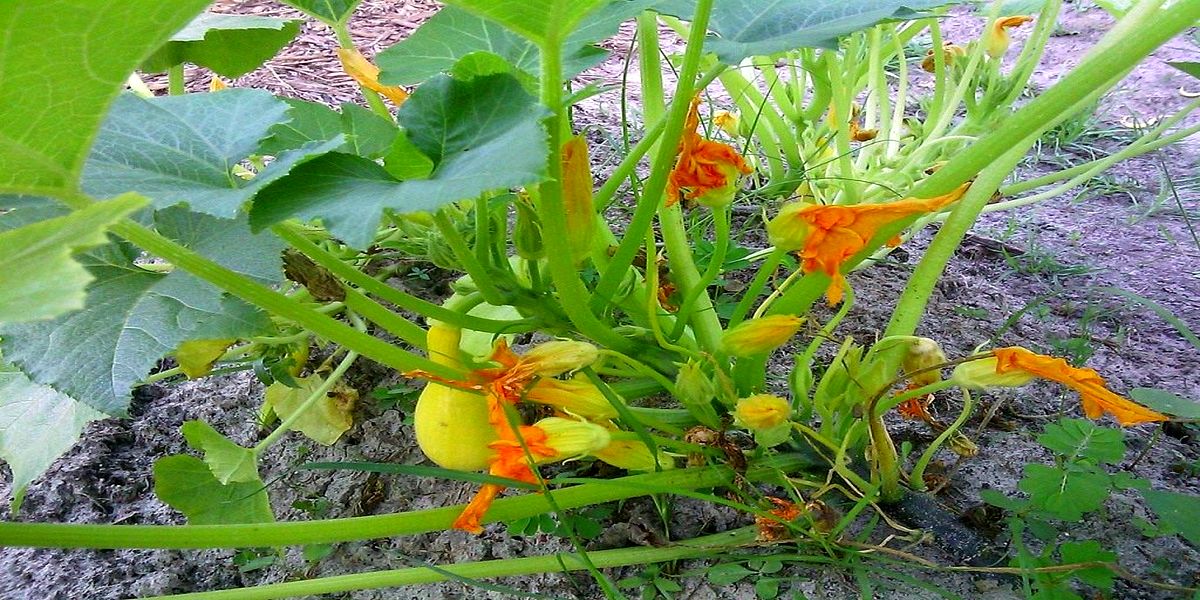
Throughout the growing season, remove old drying leaves and shoots, rotting (for example, from lying on wet ground) fruits, as well as those foliage that strongly obscures the emerging pumpkins.
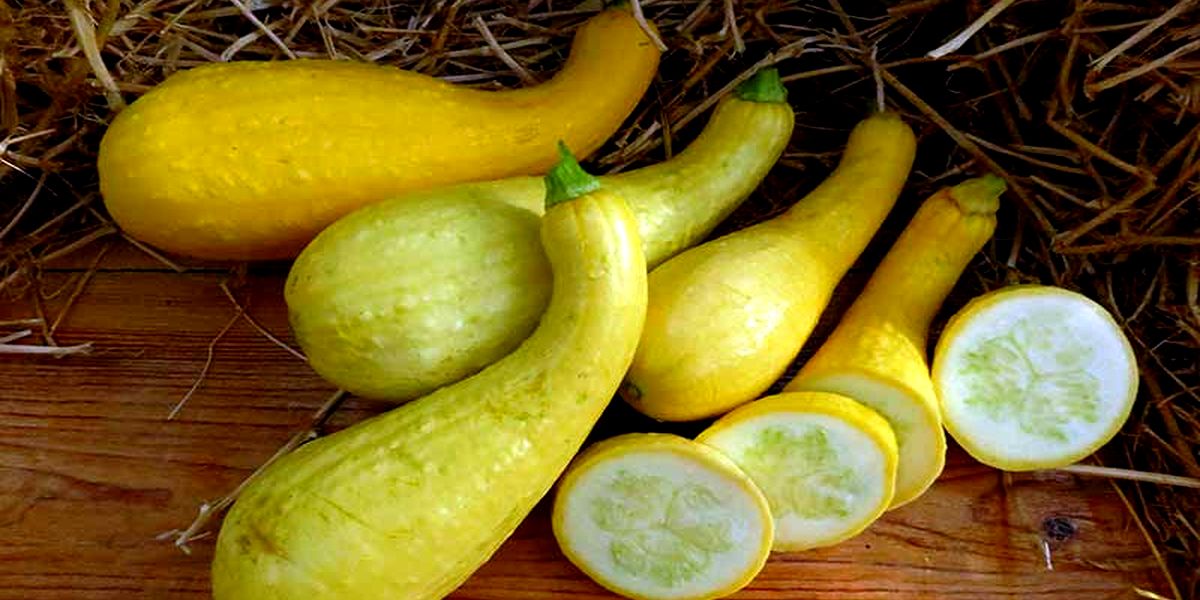
Fully ripened kruknek fruits (depending on the variety) weigh 0.5-1 kg, but very small pumpkins are often eaten, about 10-15 cm in length (in the so-called milky ripeness) - they are already formed at 30-40- 1st day after planting seedlings. Regular harvesting stimulates further fruiting.

In culinary terms, kruknek is used in the same way as zucchini - raw in salads, put in soup and vegetable stew, boiled, fried, salted, marinated, stewed, stuffed, processed into caviar. Connoisseurs say that the pulp of kruknek is more tender than squash, and also has a distinct nutty flavor. Just like pumpkin and squash flowers, crookneck flowers can be stuffed (for example, with ricotta) and fried in breadcrumbs.
If you intend to keep the harvest longer, do it in a cool ventilated area (but not in the refrigerator!), For example, in the cellar. Under optimal conditions, crookneck fruits can be stored for several months - of course, if you put healthy, undamaged specimens in storage.
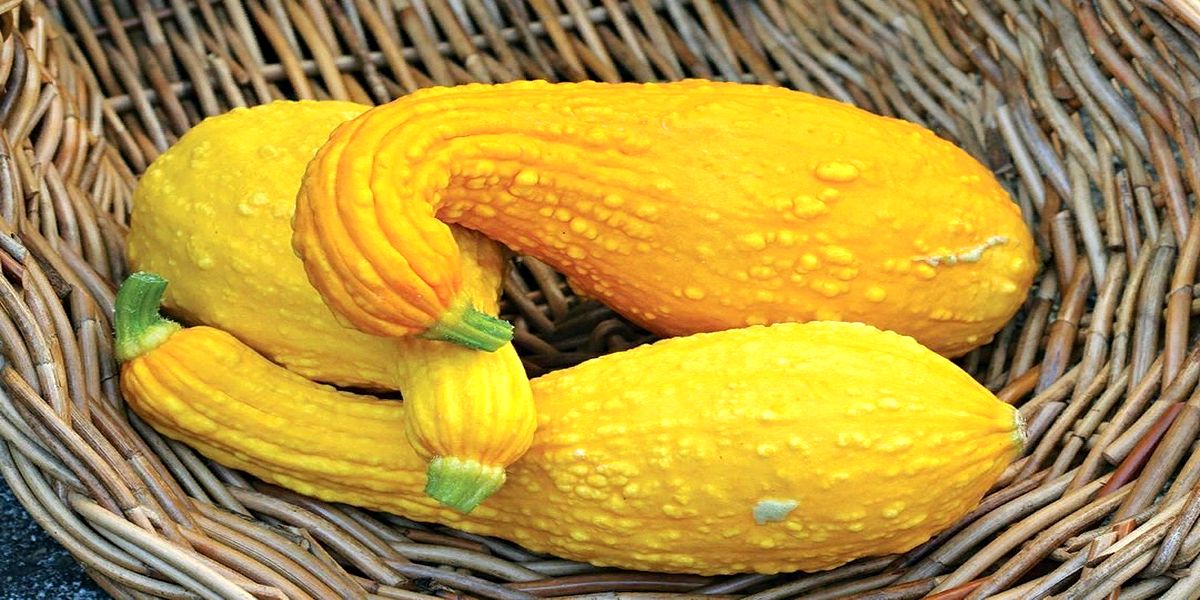
As you can see, growing such a seemingly exotic vegetable as crookneck will not give you much trouble. If you are interested in proper nutrition or would like to try growing something unusual, but rather unpretentious, in the garden, pay attention to the wryneck pumpkin.

